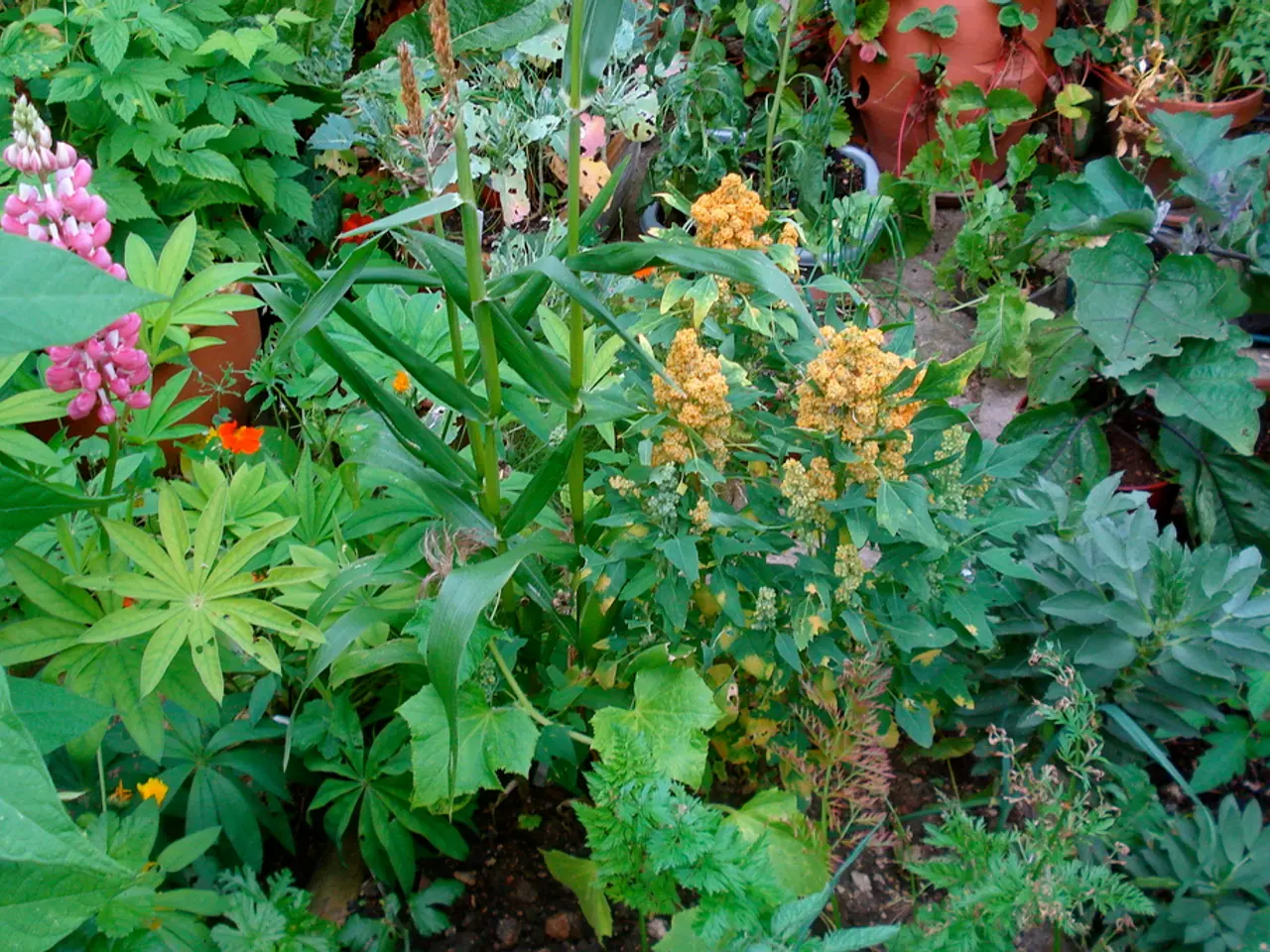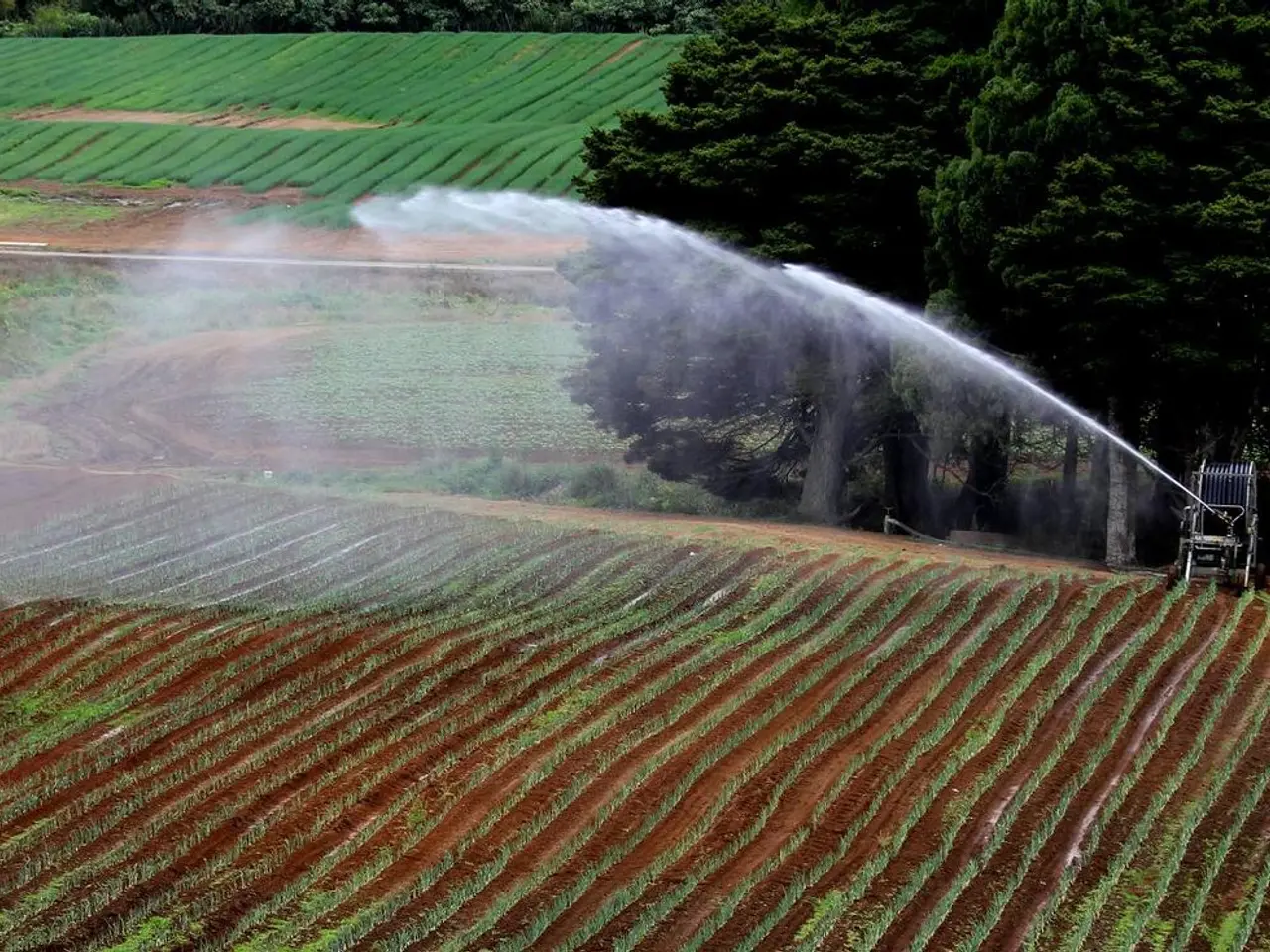Methods for Growing Different Vegetation Species
Cultivating Crop Success: A Comprehensive Guide
Welcome to our guide on cultivating various crops! This overview covers essential agricultural techniques suited for over 50 different plants. From soil preparation to irrigation, pest control, and harvesting, we've got you covered. Let's dive in!
1. Soil Preparation
Proper soil preparation is the backbone of successful crop cultivation. Here are some common techniques:
- Conventional Tillage: Digging the soil deeply to create a seedbed for crops like wheat and corn.
- Reduced or No-Tillage: Minimizing soil disturbance to preserve organic matter for crops such as soybeans and legumes.
- Deep Non-Inversion Tillage: Mixing crop residues into the topsoil while addressing subsurface compaction for root crops like carrots and potatoes.
2. Planting Techniques
There are various planting techniques based on crop specifics:
- Direct Seeding: Sowing seeds directly into the field, suitable for cereal crops (e.g., wheat, rice, barley) and veggies (e.g., spinach, carrots, radishes).
- Transplanting: Starting seedlings in nurseries and moving them to the field for crops like tomatoes, peppers, eggplants, and leafy greens (e.g., lettuce, kale).
- Intercropping: Co-planting two or more crops to maximize yield and soil health, for example, corn with beans (legumes add nitrogen for corn) or millet with groundnuts.
- Strip Tillage: Tilling only the planting strip, leaving the rest undisturbed, ideal for crops like maize and cotton.
3. Irrigation Techniques
Efficient water management is crucial:
- Drip Irrigation: Direct water delivery to plant roots, used for crops like tomatoes, grapes, and strawberries.
- Sprinkler Systems: Suitable for leafy greens (e.g., lettuce, spinach) and crops that require consistent moisture.
- Flood Irrigation: Traditional method for growing rice in flooded fields.
4. Crop-Specific Cultivation Practices
Depending on the crop, unique cultivation strategies may be necessary. Here are some examples for various categories:
- Cereal Crops: Custom cultivation for wheat, rice, corn, and barley, including pest control and irrigation requirements.
- Pulses and Legumes: Specialized care for chickpeas, lentils, and soybeans, addressing seed germination, soil preparation, and water management.
- Root Crops: Unique needs for potatoes, carrots, beets, and other root veggies, including soil preparation, planting strategies, and protection from pests and diseases.
- Fruits: Distinctive requirements for apples, grapes, bananas, and more, focusing on climate adaptation, pest control, and irrigation techniques.
- Vegetables: Unique cultivation methods for tomatoes, cabbage, peppers, and others, covering climate requirements, pest management, and disease control.
- Oilseeds: Specialized care for sunflowers, canola (rapeseed), and other oil-producing crops, including soil preparation, pest management, and irrigation techniques.
- Cash Crops: customs for cotton, sugarcane, and other major cash crops, covering soil preparation, pest management, irrigation, and other essential practices.
5. Pest and Disease Management
The Integrated Pest Management (IPM) approach combines biological, cultural, and chemical methods to manage pests and diseases:
- Crop Rotation: Preventing pest buildup by rotating crops (e.g., rotating corn with legumes).
- Companion Planting: Deter pests using specific plant combinations (e.g., marigolds repel nematodes in vegetable gardens).
- Biological Controls: Introduce natural predators like ladybugs to combat aphids, for example.
6. Harvesting Techniques
Timing is key to successful crop harvesting:
- Hand-Picking: Suitable for delicate crops like strawberries or grapes.
- Mechanical Harvesting: Ideal for grain crops like wheat or rice.
- Combined Methods: Cutting and threshing techniques for crops like sorghum.
7. Adapting Techniques to Other Plants
The techniques outlined above can be customized for a wide array of plants. Key takeaways for adapting methods include understanding the crop's growth cycle, matching soil preparation methods to root structure, selecting appropriate planting methods based on seed size and germination requirements, and tailoring irrigation systems based on water needs.
For example:
- While potatoes require hilling due to underground tuber growth, similar techniques can be applied to other tuber crops like yams or sweet potatoes.
- Strip tillage used for maize can also benefit sunflowers or sorghum by reducing soil disturbance while maintaining fertility.
Conclusion
Cultivating a diverse range of crops requires knowledge of specific techniques tailored to each plant while also applying universal agricultural principles. From cereals and fruits to vegetables and oilseeds, these methods ensure healthy growth, high yields, and sustainable farming practices that can be adapted for a multitude of plants beyond those listed here. By mastering these techniques, farmers can optimize their productivity while preserving environmental resources for future generations.
Beyond the Basics
As you delve deeper into the world of agriculture, consider exploring:
- Conservation Agriculture (CA)
- Precision Agriculture
- Crop Rotation and Diversification
- Cover Cropping
- Regenerative Agriculture Practices
These adaptive techniques can help improve crop resilience against climate change and enhance overall agricultural productivity. Happy farming!
Incorporating a flourishing home-and-garden, gardening techniques can be adapted from this comprehensive crop guide for many plant varieties. For instance, deep non-inversion tillage, effective for root crops like carrots and potatoes, can also benefit plants like dahlias and Jerusalem artichokes. Similarly, intercropping, co-planting two or more crops to maximize yield and soil health, can be applied when growing flowers such as marigolds and zinnias with herbs like basil and parsley. Additionally, efficient water management strategies like drip irrigation, used for crops like tomatoes, grapes, and strawberries, can be applied to plants like roses and lavender, ensuring healthier root growth.







